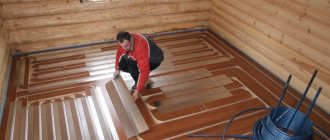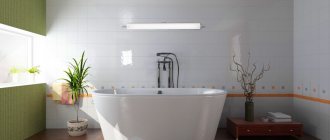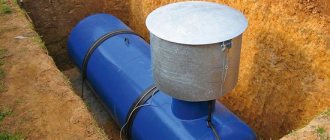Effect of increased fluid hardness
Hard water is not recommended for use , both for economic and domestic purposes.
Its negative effects are multifaceted:
When watering a garden plot, hardness leads to soil salinization.- Scale forms on water heating devices, which quickly damages the equipment.
- Hard water tastes bad. It worsens the quality of drinks (tea, coffee) and other dishes.
- When using solid soap or liquid detergents, flakes form in the solution.
- The ingress of hard salts into the body can lead to diseases of the kidneys, joints, and cardiovascular system.
Water with increased hardness from wells can be normalized using special filters designed to normalize the salt composition.
How to choose a household filter for hard water
A number of parameters are taken into account, the main one of which when choosing a filter for softening water from a well is the composition. It is recommended to first determine what substances and inclusions are contained in the liquid. To do this, you can take samples to the laboratory. Based on the results, a softener option is selected: a highly specialized device that controls the level of hardness, or a universal system that provides additional cleaning.
Another important criterion when choosing is the intensity of fluid flow, its volume. Based on this information, filters with different capacities and different types of section filling are selected.
The installation location is also taken into account. Water softening units for washing are selected if multi-stage cleaning is planned. For comparison, the main filter for hard water is necessarily located on the pipeline, and an insertion is made into the pipe.
The cost of the devices also plays a role. It depends on the functionality and efficiency of the filtration system. It should be taken into account that prices in Moscow and the regions may differ slightly.
Jug filters
This is a universal type of device. The main function is to purify the liquid. As mechanical particles and organic substances are removed, there is a delay in the structure of the cartridge and a certain amount of minerals.
As a result, the liquid is not only purified, but also becomes softer. Jug filters are compact. For optimal performance, it is necessary to replace the cartridge on time.
Ion exchange stationary installations
There are options:
- a model designed to replace the contents (while the flask itself can be in use for a long time);
- filters are in the form of cartridges, they do not open, so after a certain period you need to replace the consumables;
- devices in the form of cylinders, in this case the method of regeneration of ion-containing resin is used.
In everyday life it is easier to use the first 2 options. However, the latter type is distinguished by its long service life and high efficiency. It is advisable to install it if the water flow is high.
Magnetic and electromagnetic devices
Such filter models are mounted on a pipeline, which ensures that all liquid supplied to the consumer is cleaned of salts. It is recommended to combine the devices with osmotic systems. Moreover, the latter improve the quality of water for food purposes (they are installed under the sink), and magnetic and electromagnetic ones – for washing and water procedures.
Reverse osmosis filters
This option is gradually gaining popularity. Installed under the sink. The liquid goes through several stages of purification, as a result of which it is deprived of harmful components and acquires an improved taste and smell. However, this model is inferior to its analogues in terms of cost; its purchase will entail significant costs.
Analysis and classification
At home, it’s easy to get an idea of the quality of water:
- First of all, it is recommended to brew the tea and examine it carefully . If the drink turns out cloudy, the color is not bright, the aroma is poorly felt, then the water is of poor quality.
- You can try washing it . If insoluble flakes have formed in the container, the solution does not foam, which means that the water contains an excess of hard salts. Obtaining an accurate result is possible after analysis in the laboratory. The service is provided by sanitary stations and water supply companies.
Important. The hardness of one type can be easily removed by boiling (temporary), while the hardness of another type cannot be removed even with prolonged heating to 100 °C (permanent). Total hardness is understood as the total content of salts of the first and second types.
When boiling, acid salts of carbonic acid (hydrocarbonates) and calcium and magnesium cations precipitate.
When heated to boiling point,
the following calcium and magnesium salts do not precipitate:
- sulfate,
- chloride,
- silicate,
- nitrate,
- phosphate.
To evaluate effectiveness, it is important to have an understanding of the units of stiffness used. According to GOST of 2014, hardness is measured in conventional units - degrees (°Zh).
One such unit is equal to a salt concentration of 0.5 mol in mg/dm3 (g/m3), which is equal to 1 mEq/L. Thus, 1°F is ½ mmol/l .
According to SanPiN standards, taking into account changes from 2020, the maximum acceptable concentration in drinking water is 7 mEq/l. In some regions, with approval from health authorities, a maximum of 10 mEq/L is allowed.
Types of filtration systems for cleaning and softening
To reduce the concentration of hardness salts, long-known and innovative technologies are used.
The filters are different :
- sizes,
- cost,
- regeneration methods.
Ion exchangers
The materials are polymer granules saturated with sodium ions. When a stream of water is passed through a column of ion exchange resins, cations are exchanged .
As a result, salts of carbonic acid are formed with sodium cations, which are highly soluble in water.
After the capabilities of the ion exchanger are exhausted, it can be regenerated by saturating it with a special solution. The restoration procedure is repeated several times, then the resin is completely replaced with a new one.
Reference. Today, ion exchange is one of the most inexpensive and effective methods of water softening.
The disadvantages of the process are that the resin reservoir takes up space.
The resulting water is saturated with sodium ions , which should be taken into account in the daily diet.
Membranes
Modern filters use a membrane transfer of clean water into a separate zone thanks to reverse osmosis. The systems are more expensive than units with ion exchange resins and provide filtration from all compounds , including hardness salts.
To obtain a product suitable for consumption, a mineralizer is additionally installed.
Magnet
The method of softening water using a magnetic field is now widely advertised. However, its effectiveness is relative .
Under the influence of a magnetic field supplied by nozzles or using electricity, the solubility of salts in general, and hardness in particular, changes. After being treated with a magnet, they do not form sediment so quickly when water is heated, which is important for closed circuits.
For other purposes, such purification is not very effective; salts are not removed or converted into other harmless compounds, but only settle a little more slowly. Additional filtration will be required to remove the deposited sediment.
Polyphosphate treatment
Adding polyphosphate to hard water at a salt concentration of up to 7 mEq/L leads to an increase in their solubility. The positive effect should ensure the safe, long-term operation of water heating equipment.
In practice, it turns out that when cold water flows from a well, sufficient softening does not occur .
Therefore, this method of treating hard water does not find recognition among owners of country houses, as evidenced by numerous reviews.
Methods of water softening
There are a large number of methods to combat excessive rigidity. Each of them has its own advantages and disadvantages. When choosing a method, you should first of all pay attention to the purposes for which the purified water will be used and what the performance of the device should be.
Heat treatment
Boiling is the simplest treatment method for hard water. During heating, potassium and magnesium salts form scale and precipitate, their concentration in the liquid decreases. However, this method is not effective enough compared to others. Therefore, it is recommended to use it only as an additional cleaning.
Application of reagents
Substances such as:
- lime;
- soda ash;
- sodium orthophosphate.
This method is of little use at home, since it requires:
- large tank;
- regular reagent updates;
- disposal of used substances.
Impact of magnetic field
The magnetic field affects the molecules of salts that increase water hardness, depriving them of the ability to create crystals and press, forming plaque and scale. The advantages of the method include:
- durability of devices created on its basis, the service life of which reaches 25 years;
- no need to plug into the system.
However, there is a limitation in use: the magnetic field can only be used to influence cold water.
Ion exchange
The basis of such filters is the mechanism of replacing magnesium and potassium ions with sodium ions, which reduces hardness. This happens as the flow passes through a layer of ion exchange resin. The advantages of this cleaning method include:
- high performance;
- long service life;
- Possibility of filtration at any pressure.
Article on the topic: Mud filter for water
The main disadvantage is that only cold water can be purified using this method. The method has wide application possibilities and is used in the following types of filters:
Membrane cleaning
Reverse osmosis not only serves to reduce water hardness, but also to remove small debris. In addition to magnesium and potassium ions, the purification process also removes essential minerals for humans. In addition, the disadvantages of the method include:
- high cost;
- installation dimensions;
- flow pressure limitation, which must be at least 3 atm.
Devices using this filtration method can only be stationary, installed under the sink.
Rating of models and manufacturers of liquid softening systems
Growing public awareness of the importance of the quality of water used is leading to an increase in demand for purification systems for city apartments and country houses.
Analysis of consumer impressions allows us to compile a rating of the most popular models.
Aquaphor Crystal N
The filter complex for versatile purification of water flow is intended for use in apartments and country houses .
It allows you to delete:
- hardness salts;
- petroleum products;
- pesticides;
- heavy metals;
- chlorine-containing compounds.
The device includes three flasks with cartridges; it allows 6000 liters of water with an average concentration of hardness salts (5 mEq/liter) to return to normal. Operates at a speed of 2 liters per minute.
If the filter is used for very hard well water, the softening cartridge will require regeneration ahead of schedule after 2 or 4 weeks, and then may stop functioning.
Attention. If the recommendations are followed, the softener must be restored four times, after which the cartridge should be replaced with a new one.
The full price of a filter in Moscow is close to 3,000 rubles; one cartridge costs much less, about 700 rubles, which makes replacement easy on the budget.
Geyser Standard
A three-block cartridge filter is designed to work with running water.
Removes:
- rust;
- sand;
- heavy metals;
- organic substances.
A cartridge with food grade ion exchange resin successfully absorbs hardness salts from water with medium mineralization.
The complex operates at a speed of 3 l/min. If the recommendations for use are followed, cartridge replacement is required only once a year. The price of the filter is slightly more than 2 thousand rubles.
Aquaphor OSMO 50 version 5
The filter unit consists of several blocks on the console and a storage tank.
The complex consists of:
- cartridge for mechanical separation of impurities;
- absorber;
- softener;
- reverse osmosis system, which provides ultra-fine purification.
The device deletes:
- coarse impurities;
- hardness salts;
- all hazardous substances.
Working speed 7.8 liters for 1 hour.
Mechanical filtration cartridges require rinsing after 3 months, deep cleaning modules need to be changed after six months of intensive use, and a reverse osmosis cartridge can last 1.5 or even 2 years without replacement.
The price for a filter complex with a storage tank exceeds 7,000 rubles.
Softener Fibos
According to reviews from many users, this single-module filter demonstrates an effective softening effect . The device operates according to a chemical operating principle and provides flow cleaning at a speed approaching 17 l/min.
Within an hour, this model can clean up to 1000 liters. More powerful modifications with a capacity of up to 3000 l/min are available for sale.
The compact metal flask is easy to install and has a valve at the bottom of the body to remove accumulated impurities. Provided regular maintenance and washing out the space for dirt, the filter is guaranteed to last a long time.
The price of models with average performance is 6,000 rubles, with increased power – 9,000 rubles.
Barrier Expert Hard
A complex of three modules mounted on a console cleans the flow from mechanical particles up to 5 microns in size, as well as hardness salts and other harmful components.
The device compares favorably with analogues in the ease of replacing the cartridge and the ability to avoid too much softening, if necessary, by passing the flow around the filler in the cartridge.
The unit can be installed in any convenient place, for example under the sink. Installation is simple, the operation is accessible to home craftsmen. The resource of the filter modules is 10,000 l, the speed is 2 l/min. The price of the complex is approaching 4,000 rubles.
Which filters are best to use?
These types of cleaning devices are not cheap. Most often, they purchase some of the most expensive devices without understanding the characteristics of the entire range. You can do it simpler - select the required filter type for a specific task:
- Powered by a chemical reaction or substances added inside;
- Working through a physical process when transformation occurs without the participation of chemical additives.
It is worth understanding that chemical-based softeners must be replaced with new ones and cartridges installed. It’s more interesting with physical processes, although it is the systems for softening water from a well that are assembled from various kinds of elements.
Electromagnetic
A primitive approach to soften water. The electromagnet operates using an electrical processor and a permanent magnet. It’s possible to assemble such a setup with your own hands, but you need to understand magnetic fields.
There is only one disadvantage of the AquaShield electromagnetic filter - it does not provide liquid suitable for drinking, but only for drinking. Similar installations or devices have been installed in factories for a long time. And it works like this:
- Liquid under pressure flows through a pipe, on top of which there is a wire. At any speed of water movement, the result is guaranteed.
- As it moves, the water takes on a new shape that will not settle on the surface of the pipeline.
Related article: Water purification in an apartment
The electromagnet is convenient in terms of cost. It is often installed as a set of filters, supplementing the drinking water with another device. This will be quite cost effective and productive for the private sector. It’s easy to buy and install such a water softening installation yourself.
Polyphosphate
Also borrowed from industry, a polyphosphate filter converts liquids only to an industrial state. The essence of the technology is the reaction of sodium polyphosphate with hardness salts. The result of the process is a dense film, insoluble in water. It consists of salts, and sodium ions go into the liquid.
The cleaning process works like this: liquid is supplied to the filter through a hole in the lid. After which water comes out, suitable for household appliances and heating. For specific purposes, they purchase the necessary model, capable of passing a certain volume through itself per hour with a reserve. Inside such a softener is a loose or granular reagent, usually in a cartridge. The latter definitely requires replacement!
A significant disadvantage of polyphosphate treatment is calcium deposits in the system.
Magnetic
Already a familiar method for deferrization (softening) of drinking water from a well at the expense of fields. Such a filter is placed directly on the pipeline so that the calcium becomes insoluble. To put it simply, magnets produce a precipitate that is not difficult to filter out in a simple way. A very successful approach for protecting against lime in boilers, water heaters, water heaters, and household appliances.
The magnetic water converter is increasingly being supplemented with more expensive devices in the part of the pipeline where there is a branch to taps and mixers. This is already a system supplemented, for example, with an ion exchange or reagent-free filter.
Features of selection for a private home
If the water in a suburban area has increased hardness, it is definitely not worth using in its original form .
If the degree of mechanical contamination is not very high, the capabilities of a conventional coarse filter will be sufficient. After it, you should install a column with ion exchange resin or a filter using a reverse osmosis system.
Important. It will not be possible to obtain a large volume of pure product at once; you need to wait until the purification process is completed.
If desired, you can install a storage tank in a private house to store a supply of purified water for the future.











